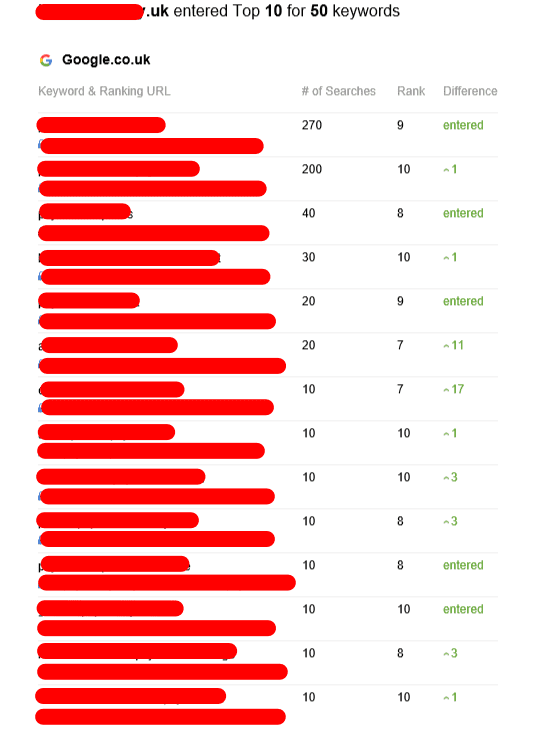Tiered Link Building - The Dangers of Black Hat Link Building
It is possible to improve your search engine rankings using a tier system of link building. It is crucial to remember that black-hat strategies can be harmful. Search engines like Google have been cracking down on these practices for years, with their numerous updates.
Avoid black-hat techniques such as PBNs and blogging comments. These are a waste of time and can result in penalties from Google.
First-tier links
This method of link building involves placing links on sites that have an excellent domain authority (DA) and a lot of monthly traffic. It's a great way to get your website noticed by search engines. It's not the best solution for every situation. While it can temporarily increase your rankings, you must be focused on the quality and quantity of your backlinks.
The goal of first-tier backlinks is to build your profile by adding a few natural-looking, high-quality and natural-looking links. This will allow you to rank for keywords relevant to your field. This will also help you build more credibility for your website which is crucial to getting the most traffic from search results.
Although some black hats advocate it, it's still an extremely risky strategy. It's not in accordance with Google's Webmaster guidelines, and if an individual reviewer finds it, they may make a manual decision which could result in a drastic drop in your rankings.
To avoid this To avoid this risk, you should make your first-tier links look as natural as is possible. This means that they must be beneficial to the article within which they are embedded, and they shouldn't be obvious or overly-spy. It is also a good idea to confirm whether the directory to which you're putting your first-tier links is registered with Google. You can check this by typing the URL of the directory into a search engine such as Google and seeing how many results show up.
Second-tier links
Tiered link building can be a great way to boost the power of your PBN, but it's not without its risks. Google is snatching at hyperlinks that look fake and the poor quality link that tiered linking building relies upon is less effective over time. This type of link building could cause penalties for your website, and may even reduce your rank.
To avoid penalties It is essential to use white-hat methods to manage your second-tier links. You can make use of high-quality content on websites relevant to your area of expertise. These links will have more authority than forums or comments, and are more likely to be clicked on by readers. It is also possible to submit articles to relevant directories. Another good option is to sign-up for HARO A subscription to email service that sends you daily emails with topics that reporters are interested in covering.
Alongside increasing the authority of your PBN, second-tier links can also improve the quality of your primary backlinks. Second-tier links built on sites that have high domain authority increase the authority of primary backlinks. It's recommended to mix standalone links from second-tier with second-tier secondary links used in conjunction primary links. This will maximize the benefits.
Third-tier links
Tiered link development has become a well-known method to boost the authority of websites. It can be used to boost rankings, boost the number of visitors and boost revenues. This method involves constructing a chain of backlinks that gradually improves in quality. It also helps to bypass spam filters.
If not done correctly tier link building is a risky process. If you are using numerous links that are not of high quality it could cause Google to penalize your site. This is because tiered linking is not in line with Google's Webmaster Guidelines.
Tier 1 links are of the best quality. They should contain the keywords that you're trying to rank for and be relevant to your site's content. This will help your website be found for the search term you're targeting, which will result in more visitors.
Tier 2 links are a bit less important. They're typically hyperlinks to directories, blogs Q&A websites, and social media profiles. what is tier 2 link building? tend to be a little more spammy but they can be useful. These include links on forums, comment sections, and bio profiles. The majority of people who participate in tiered link building tend to throw quality, relevance, and context out the window at this stage. They use automated tools to generate third-tier links, and link them to low-authority web pages.
Fourth-tier links
Tiered link building is an effective method of increasing the rank of a website's organic search. It's only effective when combined with other white-hat SEO strategies. Google could penalize your site for not following these guidelines. The reason for this is that tiered links are often coupled with poor quality content, which Google believes is an attempt to alter the algorithm of its search engine.
Tiered links are often linked to low-quality blogs and websites. They can lose their value if search engines begin to consider them spammy or irrelevant. They are also available on low-quality profiles on social media, web 2.0 platforms and other websites that feature user-generated content. The quality of these backlinks can be low and they can be constructed with the help of automated tools.

In addition to these drawbacks the use of tiered link building can lead to an over-exaggerated and inflated profile of backlinks, which can negatively impact a website's SEO. This is because it's difficult to distinguish between low-quality and high-quality backlinks. Furthermore, it can be expensive for a company to maintain a huge number of links. Therefore, it is recommended to employ tiered link building together with a comprehensive strategy for marketing content. This will ensure your content is relevant for your intended audience and is more likely to drive traffic to your site.
